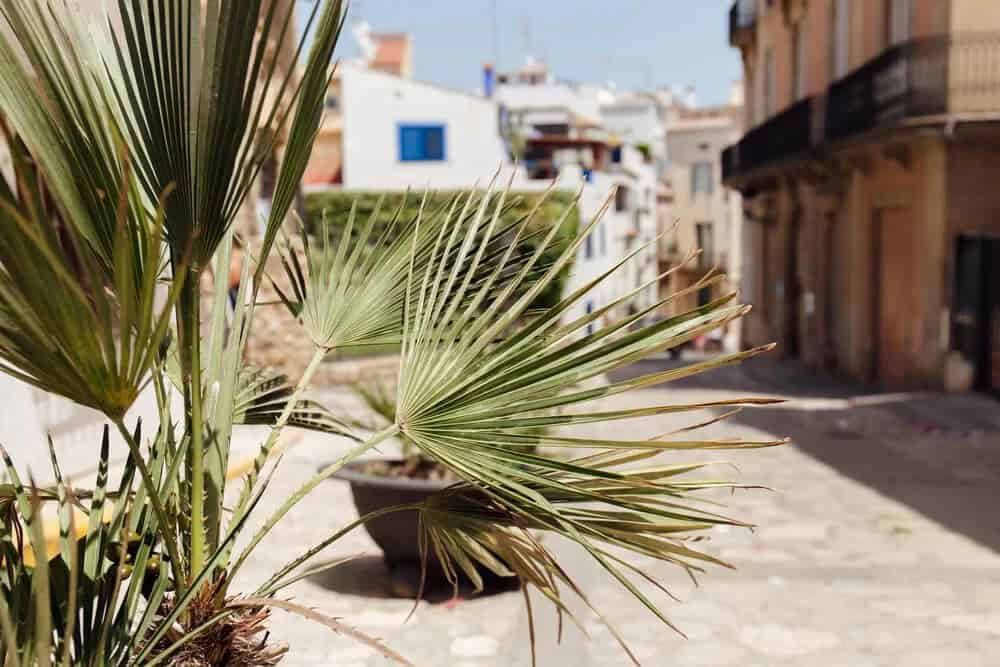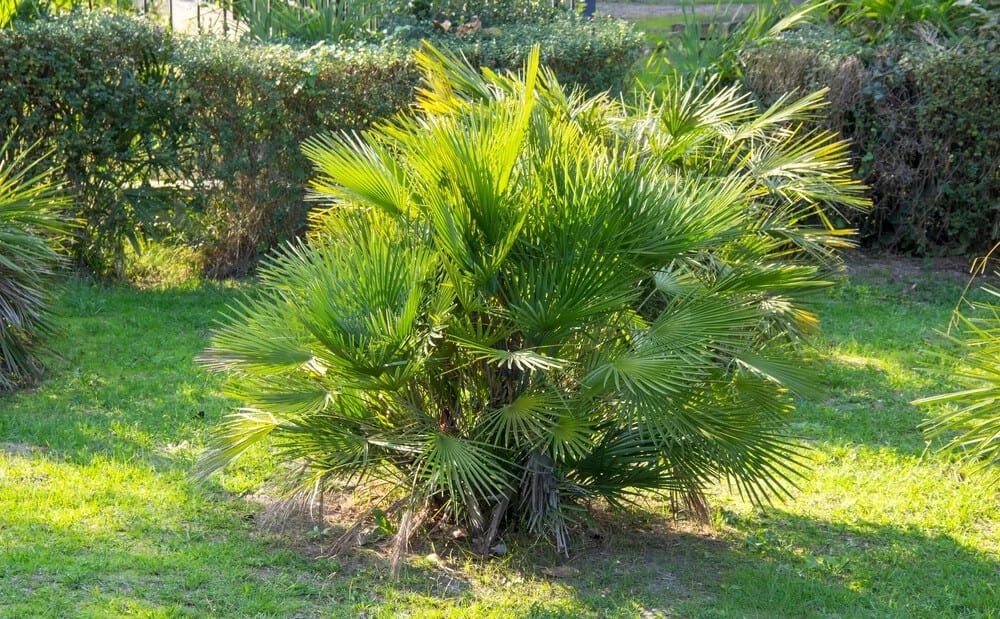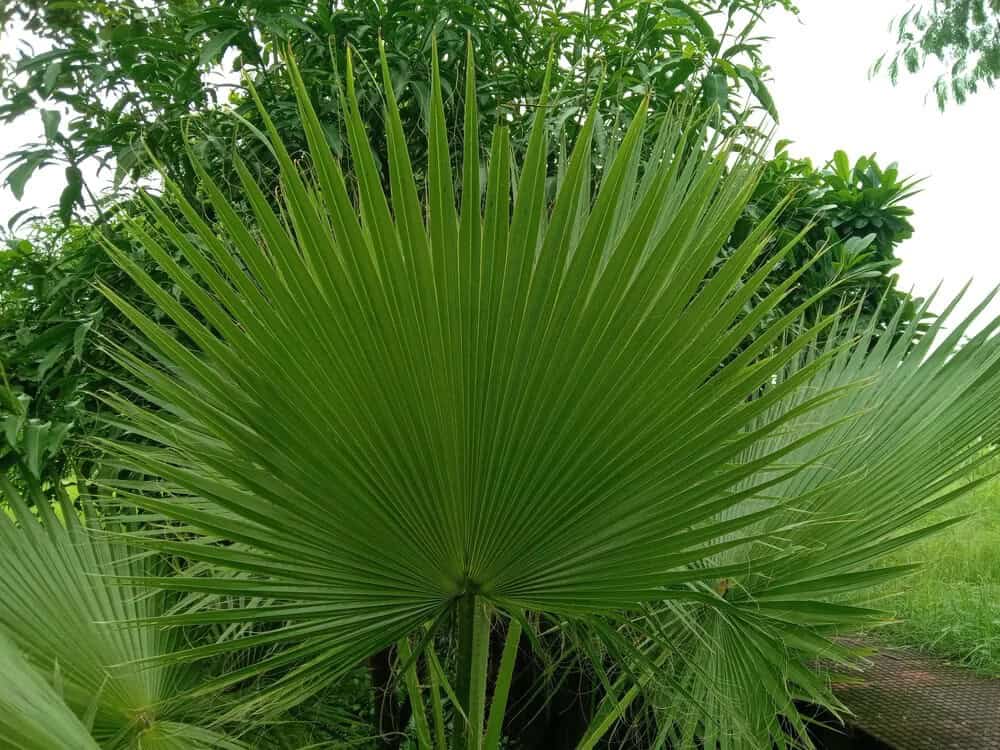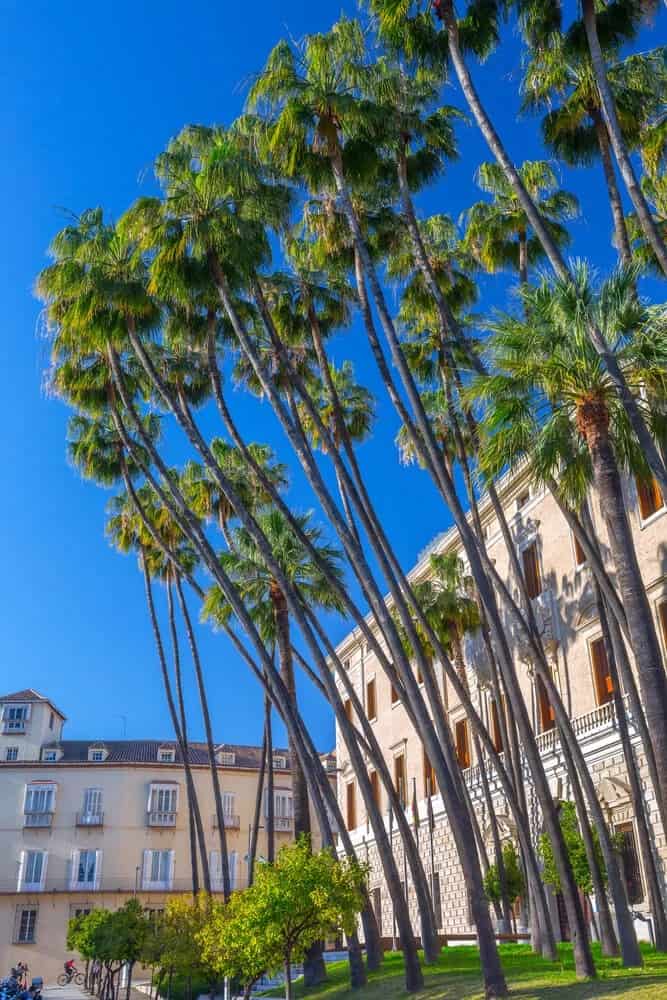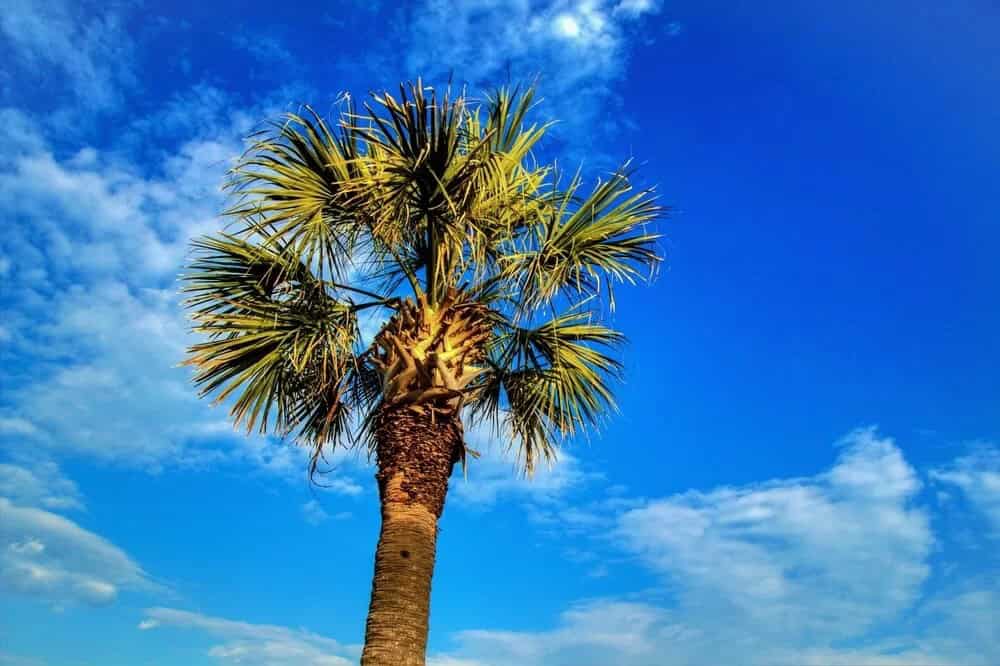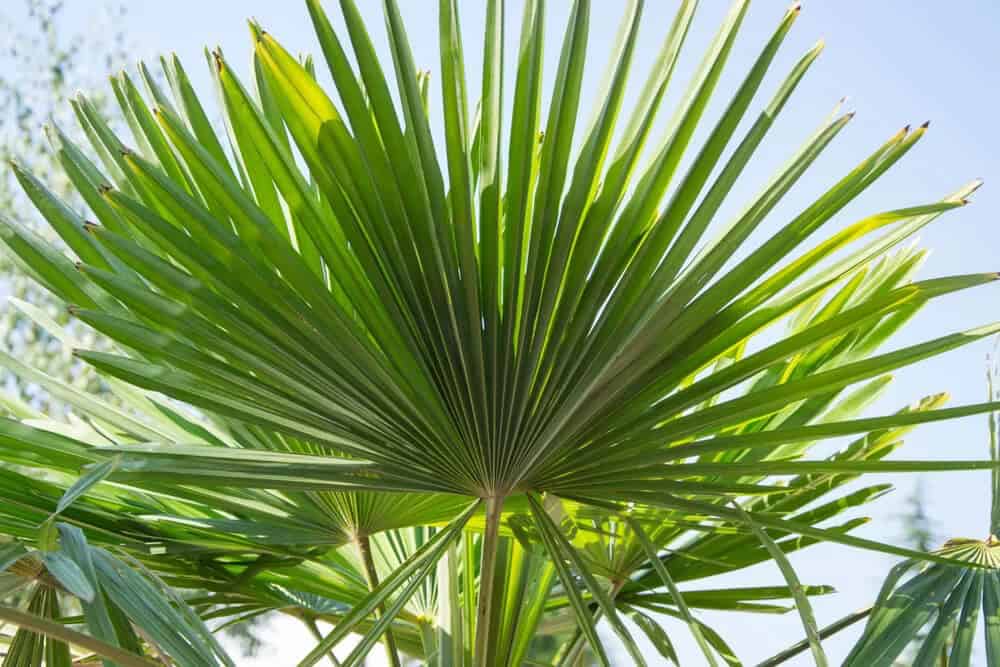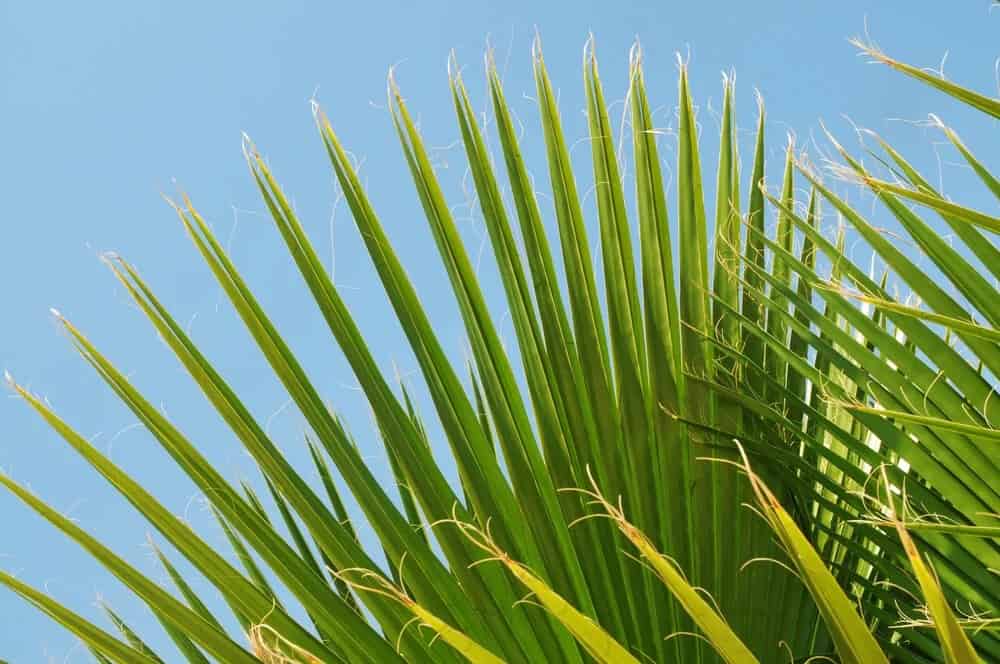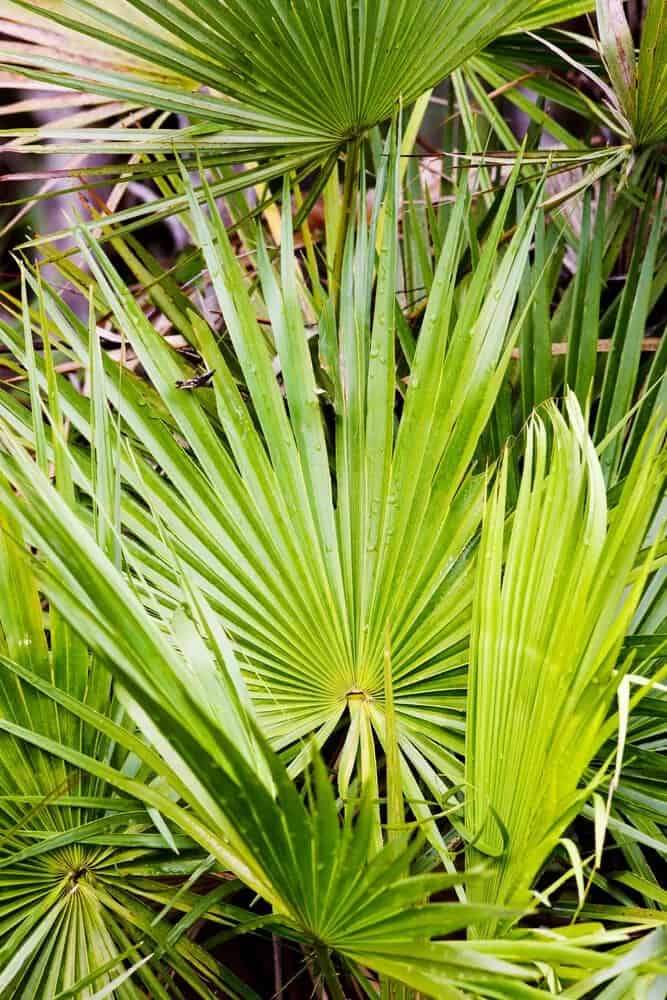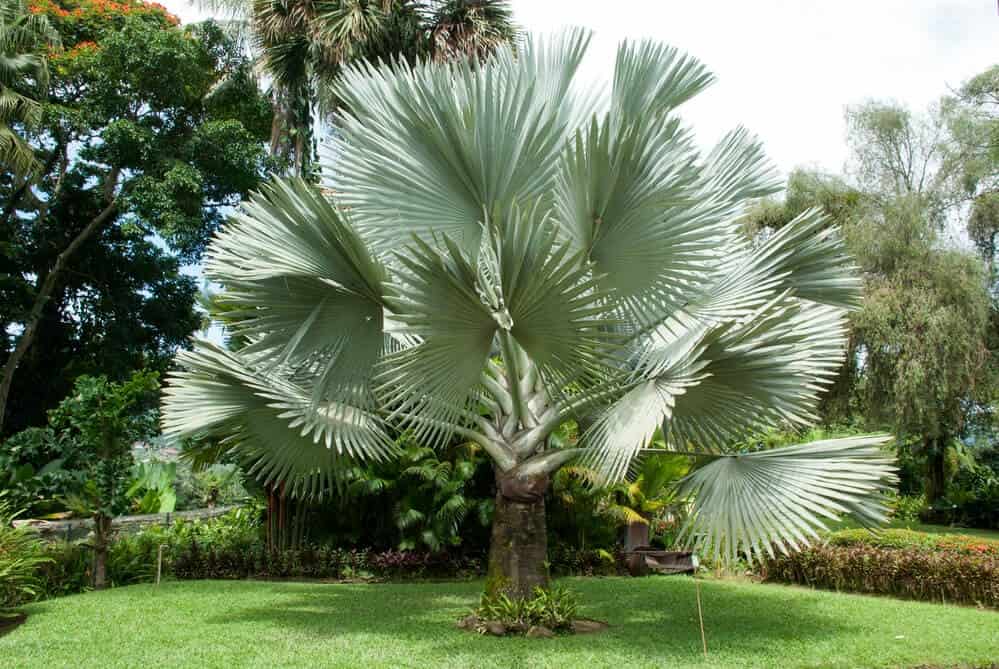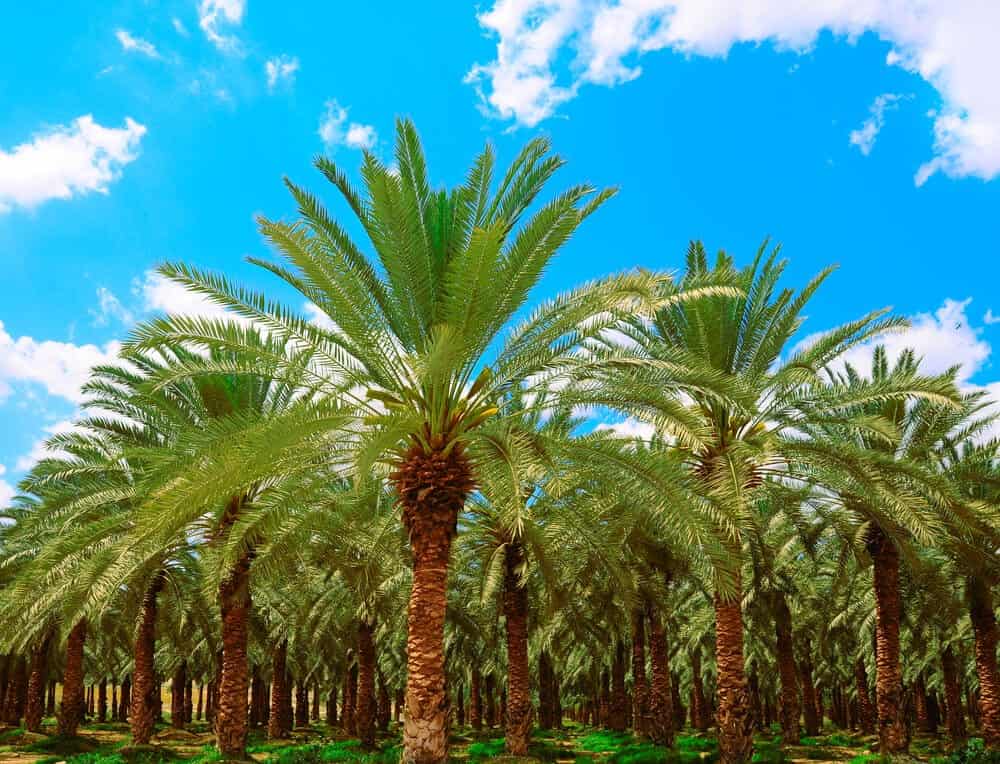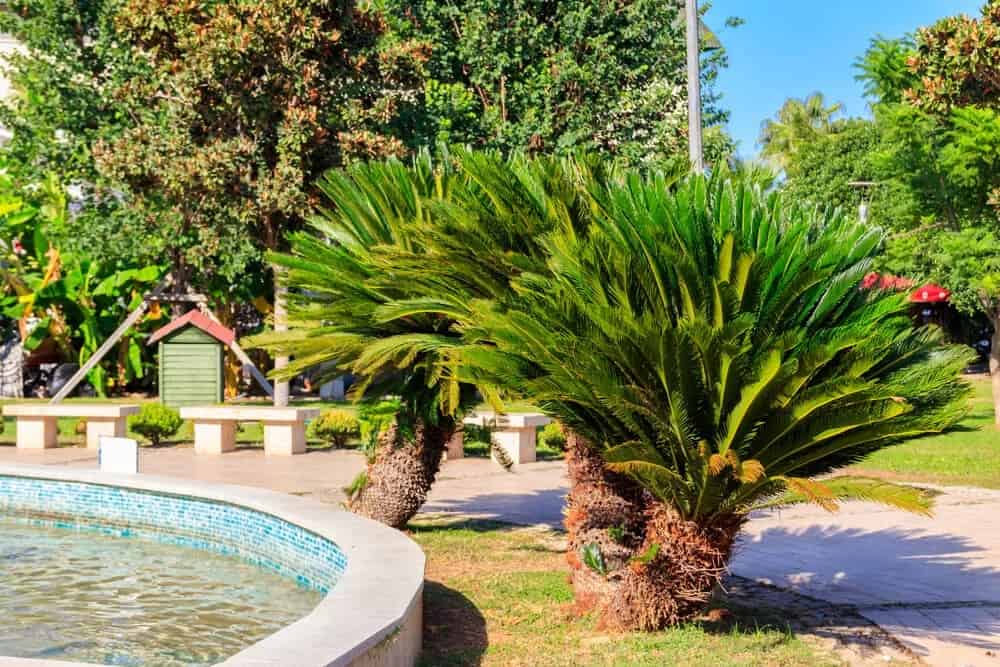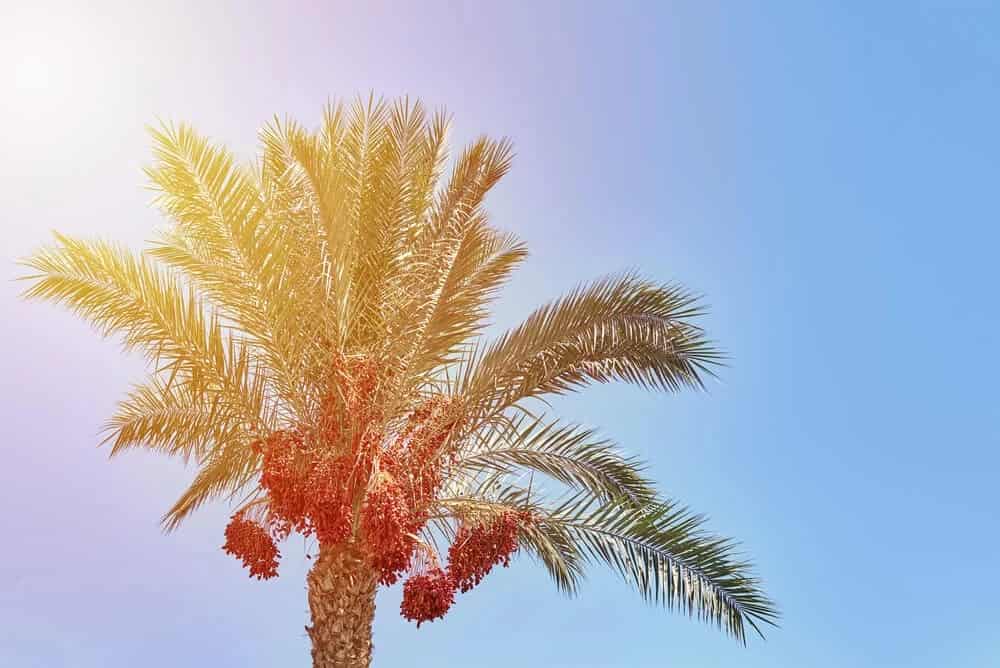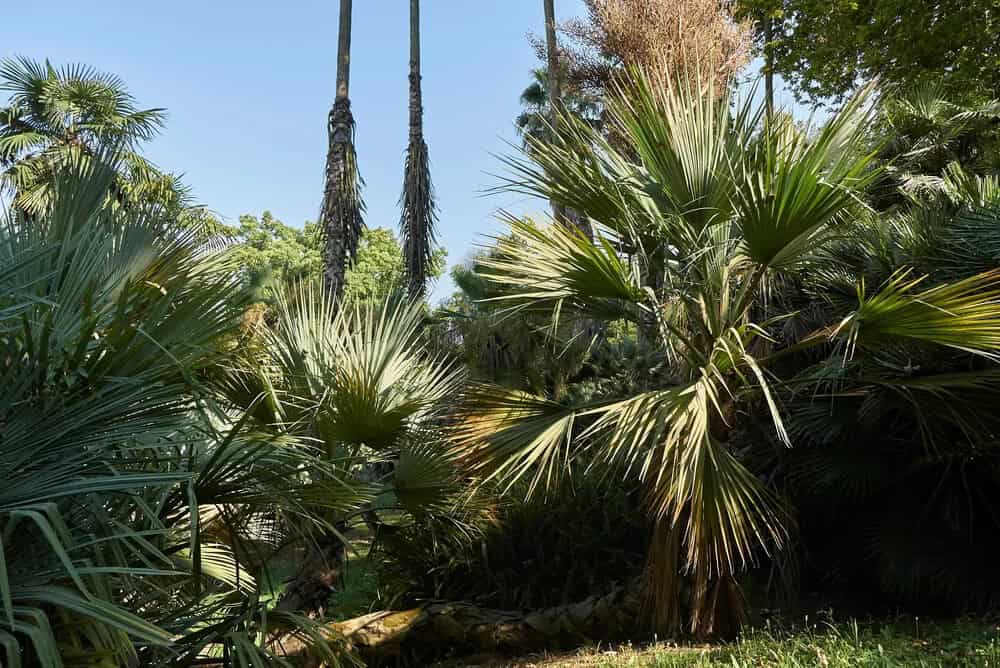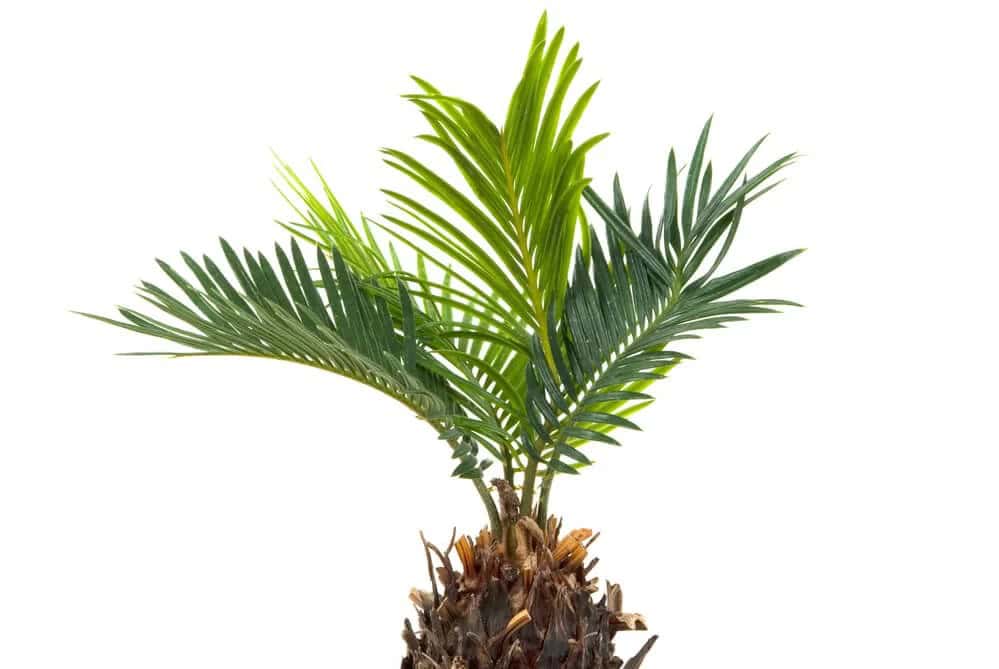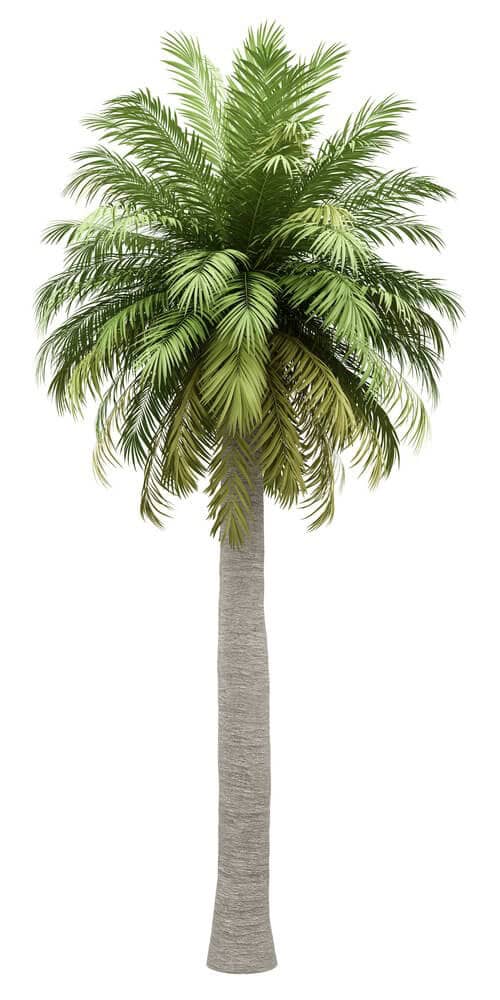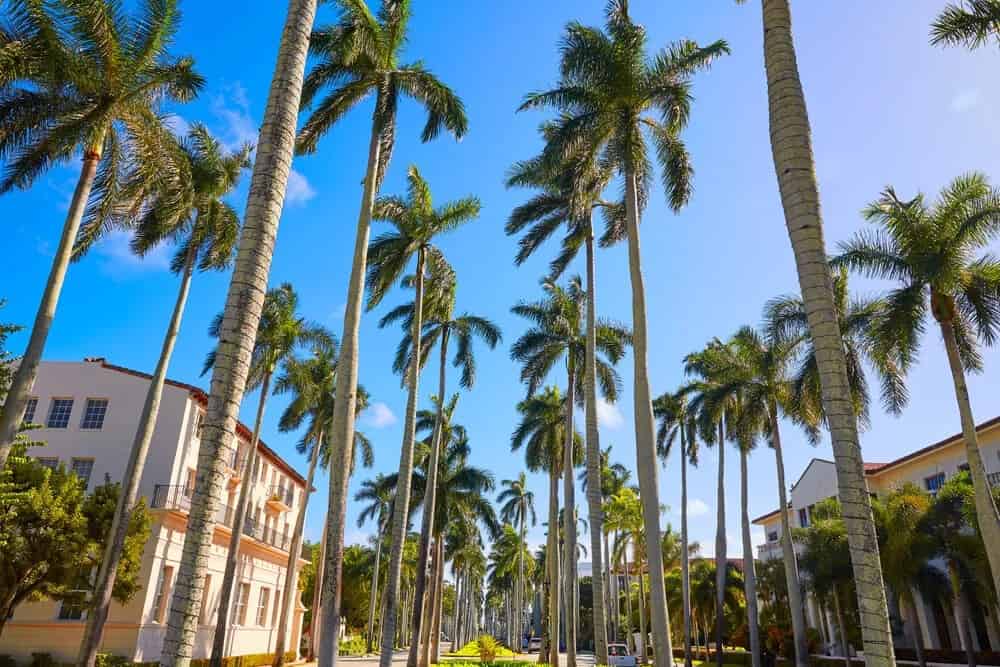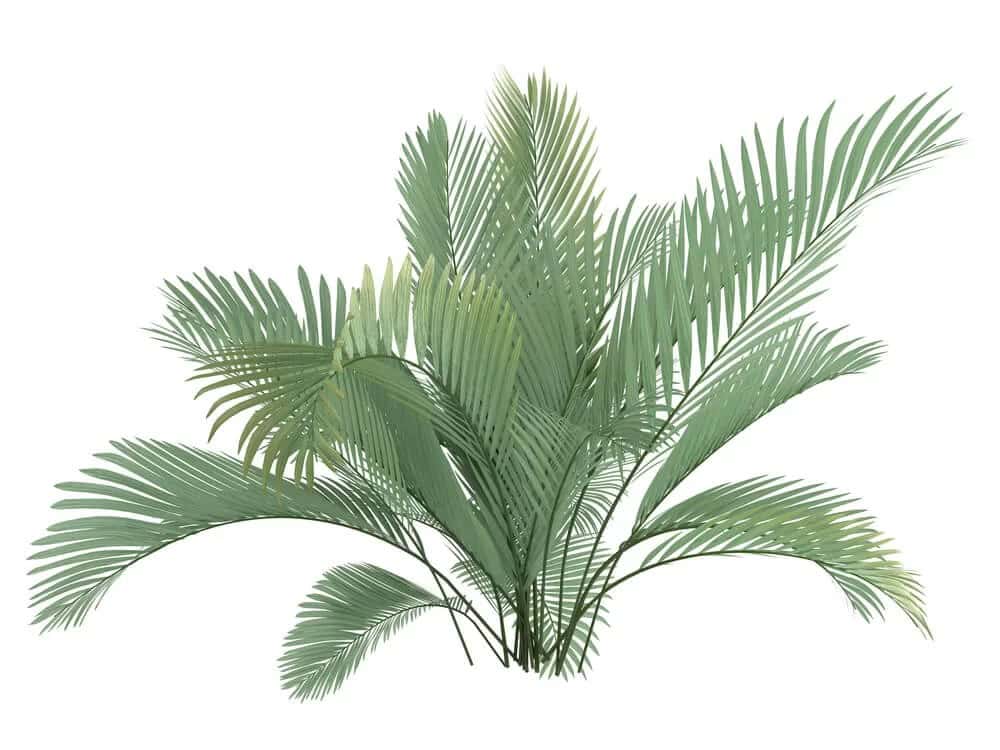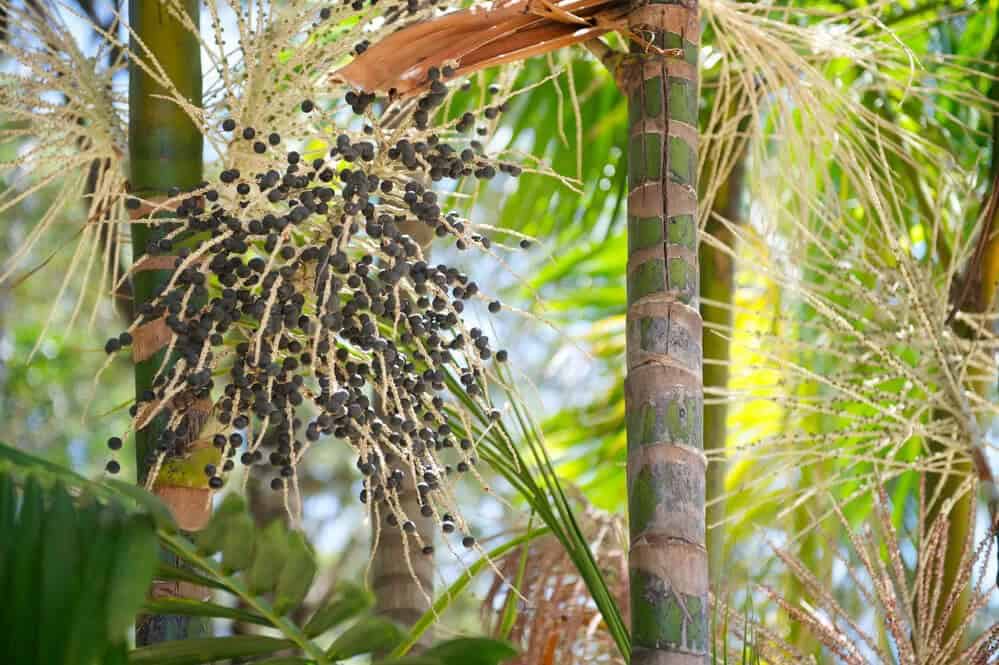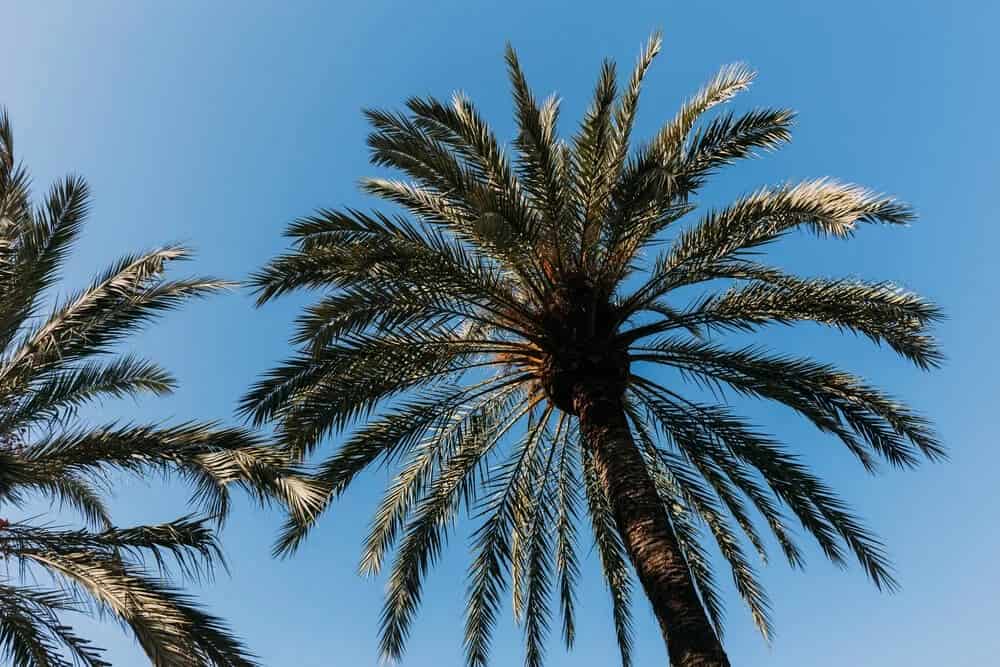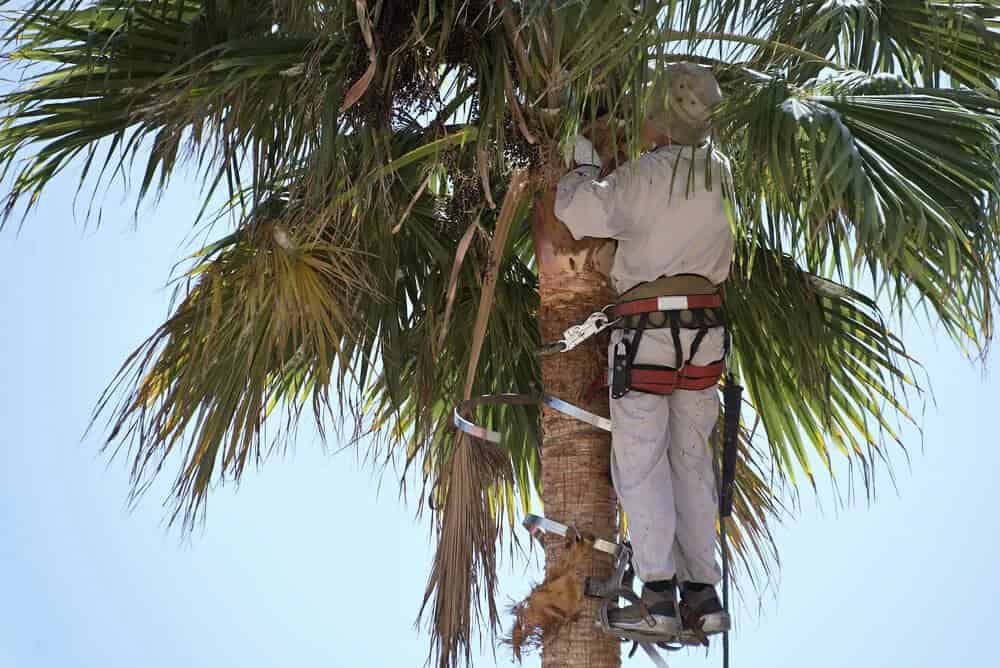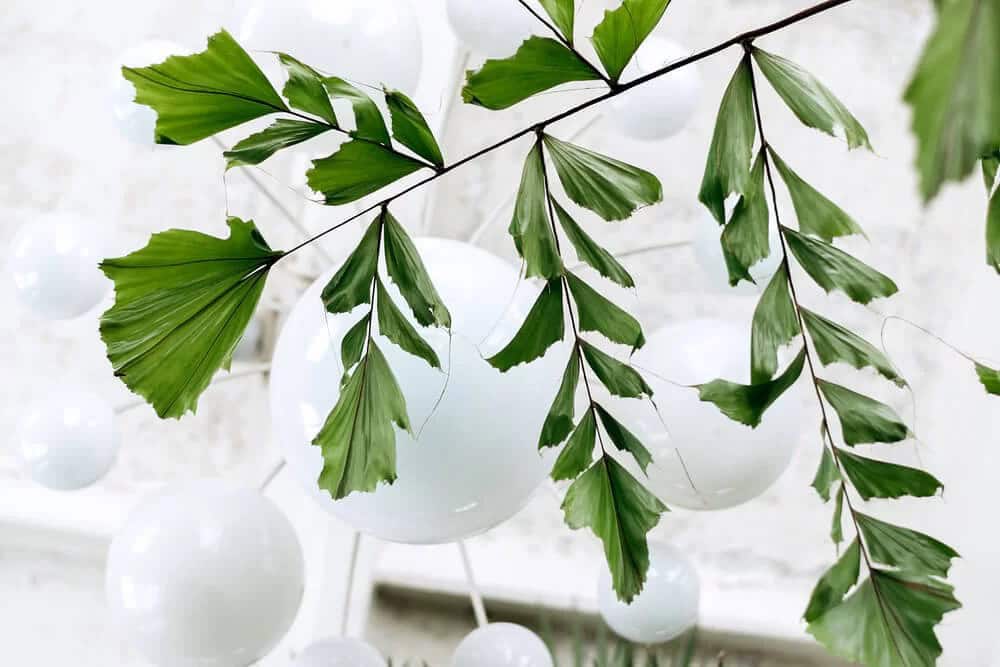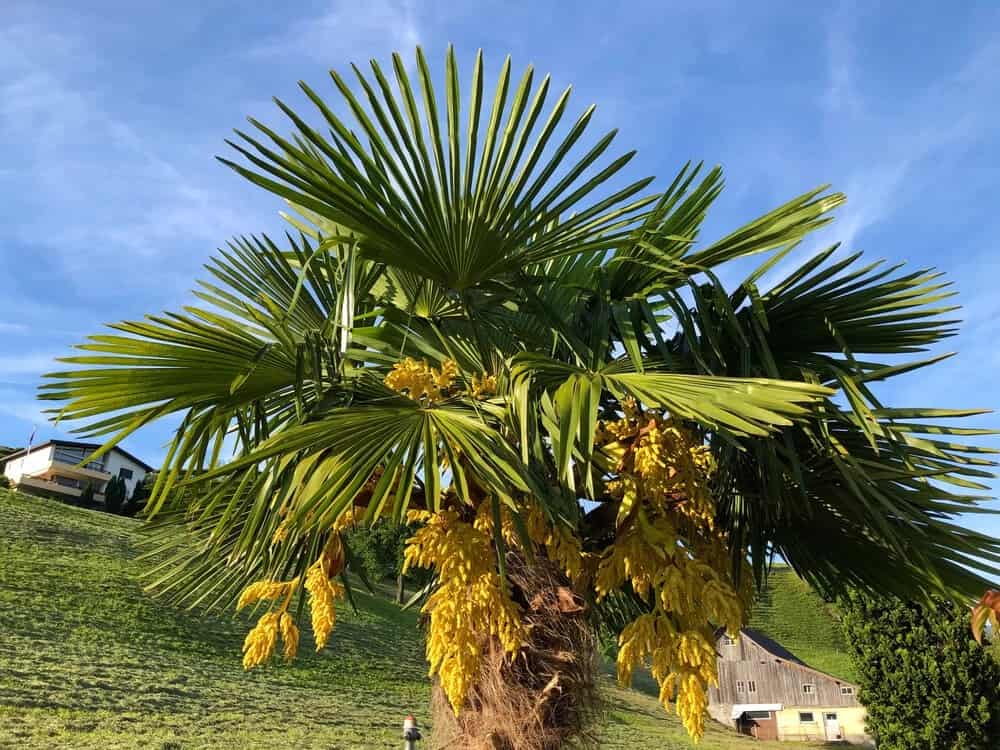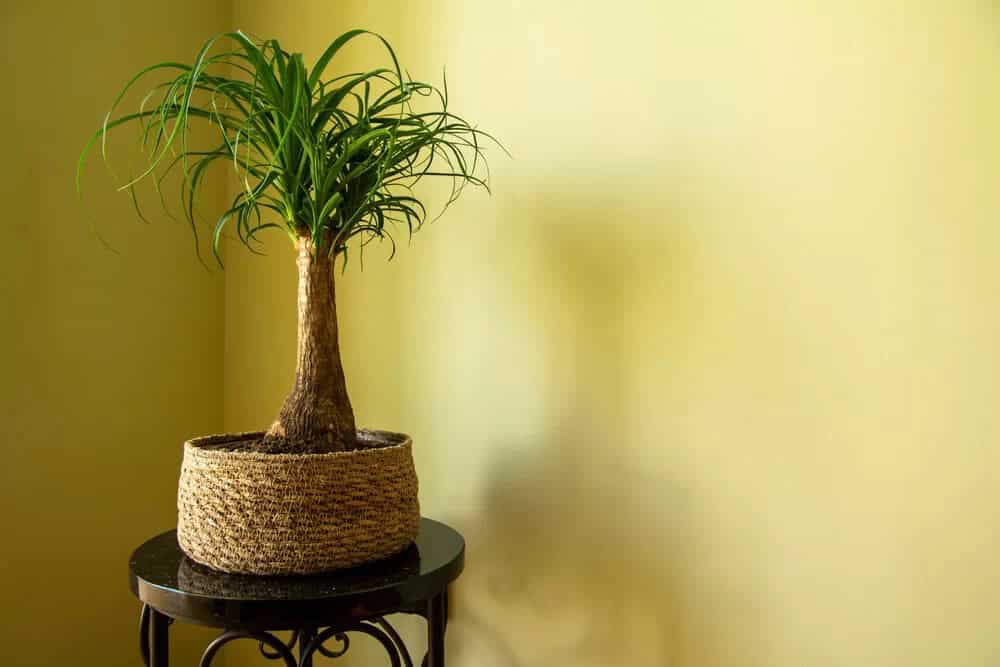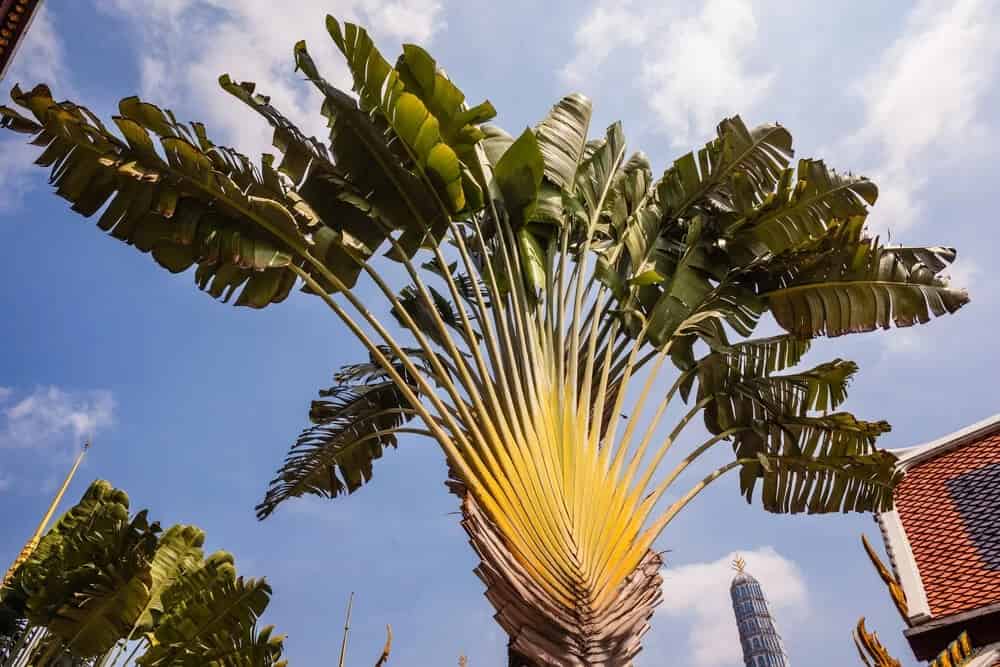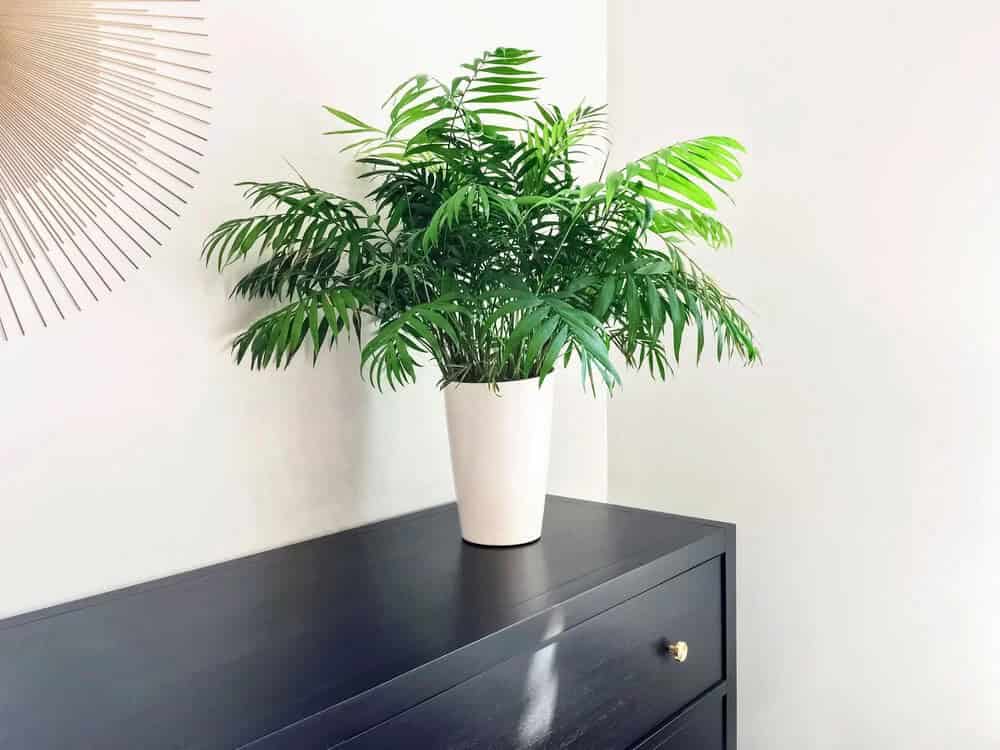Palm trees are often the first choice for creating a unique topical look in a garden. But what’s lesser known is that palms belong to many different genera, resulting in a vast array of options. This diversity includes palms that thrive quickly or slowly, ranging from towering to compact sizes, and suitable for both indoor and outdoor settings. To provide a comprehensive overview of the many palm tree varieties you can grow in your landscape, we’ve curated a selection of the top 40 species.
Key Takeaways
It’s fascinating to explore the vast world of palms, with their stunning diversity of species. While there is much to discover about this extensive plant family, here are five key facts that will become apparent as you read on. The palm tree family encompasses a wide range of sizes, from towering trees to compact shrubs. Some palms bear edible fruits, while others thrive in outdoor environments or can be cultivated indoors elsewhere.
40 Types of Palm Trees You Can’t Pass Up
Needle Palm (Rhapidophyllum hystrix)
The needle palm may be compact in stature, reaching only a few feet tall and wide at maturity, which gives it a shrub-like appearance. However, it’s the palm’s hardiness that truly sets it apart from others of its kind. Unlike many palms, the needle palm is adaptable to both hot and temperate climates, and can even withstand temperatures below 0 degrees Fahrenheit in some cases.
Known by some as the porcupine palm due to the sharp spikes that emerge between each leaf, this plant requires caution when pruning or handling to avoid injury from those prickly protrusions.
Coconut Palm (Cocos nucifera)
While many are familiar with the presence of palm trees and coconut trees in tropical climates, it’s surprising to learn that the coconut tree is actually a type of palm. Specifically, the Cocos nucifera species, commonly referred to as the coconut tree or coconut palm, is capable of reaching remarkable heights and producing abundant clusters of coconuts at its apex.
For those living in climates suitable for this species, the reward is bountiful – simply step outside and harvest a fresh supply of these delectable fruits right in your own backyard.
European Fan Palm (Chamaerops humilis)
Among the many palm tree varieties available, there are some excellent options for those seeking smaller plants or slower-growing specimens. One such option is the European fan palm tree, which stands out as a compact choice. Reaching a maximum height of 15 feet, this slow-growing species develops its distinctive fan-shaped fronds while maintaining a tidy habit. The fronds themselves are quite striking, boasting a prominent shape and subtle silvery green hue that adds to their visual appeal.
Chinese Fan Palm (Livistona chinensis)
The Chinese fan palm tree is a prime example of a palm species that boasts broad fronds, giving it a unique visual appeal. Like its European counterpart, this palm tends to grow more like a shrub than a towering tree. However, the Chinese fan palm takes this characteristic to an extreme, typically reaching a maximum height of just 6 feet. This compact nature makes it an ideal choice for indoor gardening enthusiasts, as it doesn’t overwhelm even the smallest spaces.
When cultivated in containers, the plant proves remarkably adaptable and won’t outgrow its surroundings. To ensure its continued health and vigor, provide it with at least several hours of direct sunlight each day, and it should thrive for years to come.
Mexican Fan Palm (Washingtonia robusta)
The Mexican fan palm tree stands out from other fan palms with its striking fan-shaped leaves and remarkable size. While it may begin as a compact shrub, this tree has the potential to grow up to 100 feet tall in ideal conditions. One notable characteristic of this species is that dead leaves do not naturally fall off the tree. This unique feature requires regular pruning to maintain an even canopy and prevent disease from setting in.
By keeping a watchful eye out for dying fronds, you can ensure your Mexican fan palm thrives.
California Fan Palm (Washingtonia filifera)
While North America has a diverse range of palm tree species, only a select few are native to the region. The California fan palm stands out as the largest and most prominent among these indigenous varieties. Reaching heights of up to 80 feet, with leaves extending up to 5 feet in length, this impressive plant is often found thriving in desert landscapes. However, its adaptability also allows it to flourish in mountainous regions.
For anyone interested in both palm trees and native plantings within the United States, the California fan palm offers an attractive option.
Types of Palm Trees: Palmetto (Sabal palmetto)
The cabbage palm, affectionately known as the palmetto, is an iconic and widely recognized species of palm tree in the United States. It holds a special place in American culture, serving as the official state tree for both Florida and South Carolina, with the latter being colloquially referred to as the Palmetto State. Beyond its notable reputation, the palmetto palm is also a visually striking tree. Mature specimens feature a single, sturdy trunk that supports a cluster of fronds at the apex.
When pruned to create a specific pattern, the palmetto’s spent fronds can be removed, revealing a unique cross-hatch design on its trunk.
Dwarf Palmetto (Sabal minor)
The dwarf palmetto is another species within the same genus as the famous palmetto palm tree, but its compact growth habit sets it apart. Reaching maturity at around 5-10 feet tall, this smaller yet equally impressive tree boasts large fan-shaped leaves that thrive in areas of Mexico and the southern United States. Its diminutive size makes it an ideal indoor planting option for those in colder regions, allowing you to enjoy its tropical charm regardless of your location.
The dwarf palmetto also exhibits a remarkable ability to adapt to a broad range of growing conditions, making it a versatile choice for any gardener.
Saw Palmetto (Serenoa repens)
While sharing a common name with other palms, the saw palmetto does not belong to the same genus as its similar-looking counterparts. Despite this classification distinction, the saw palmetto still bears enough resemblance to warrant shared nomenclature. Its exceptional popularity in nurseries has led to multiple cultivated varieties, each featuring distinct foliage colorations.
These cultivars typically exhibit a small stature and slow growth rate, with little variation beyond their visual characteristics.
Everglades Palm (Acoelorrhaphe wrightii)
The Everglades palm is a unique species that thrives in swampy environments across the southeastern United States, Caribbean islands, and Central America. This adaptable palm excels in wetter soils, making it an attractive choice for homeowners with such conditions. One of its distinguishing features is its clumping growth habit, which sets it apart from other palms that typically grow as solitary trees.
This dense clustering can be beneficial for creating a natural screen or providing privacy in landscaping design. However, it’s essential to monitor the palm’s development and prune stems promptly if they fail to grow vertically, as this can lead to bending, twisting, and breakage under their own weight as they mature. With proper care and pruning, the Everglades palm can be a stunning addition to your outdoor space.
Jelly Palm (Butia capitata)
The jelly palm is renowned for its delectable fruits, which are highly prized for their use in jams, baked goods, and other sweet treats. Before these fruits ripen, the tree is adorned with small, creamy flowers that emit a delightful aroma. While the fruiting process or flowering may not be currently occurring, the Jelly palm remains striking due to its elegant, arching fronds that shimmer in the breeze, showcasing their unique texture.
Moreover, this versatile palm thrives in both full sunlight and partial shade conditions, tolerating relatively low temperatures more readily than many other palm species.
Bismarck Palm (Bismarckia nobilis)
The Bismarck palm’s foliage is renowned for its breathtaking beauty, with fronds boasting a stunning fan-shaped appearance and a striking silvery-blue hue. The palm’s single sturdy trunk serves as the anchor point for these magnificent leaves, which can grow impressively large. As an ornamental centerpiece in gardens located within hardiness zones 10 to 11, this tree is sure to turn heads.
Moreover, it exhibits remarkable drought tolerance within its suitable growing range, making it an excellent choice for gardeners seeking low-maintenance yet visually striking foliage.
Date Palm (Phoenix dactylifera)
Palms are more than just a visual staple of certain landscapes – they’re also the lifeblood of many beloved fruit varieties. Take, for instance, the Phoenix dactylifera, which yields an abundance of dates when cultivated. Even if you don’t plan to harvest from your date palm, the vibrant red clusters of fruit hanging amongst the long green fronds create a striking visual contrast that’s sure to capture your attention.
Canary Island Date Palm (Phoenix canariensis)
The Canary Island date palm stands out for its impressive height of up to 90 feet when conditions are optimal. A slow-growing species, it takes this palm over a decade to reach just 10 feet tall in typical circumstances. While it shares some physical characteristics with the dates we’re familiar with, the fruit it produces is not particularly palatable and is rarely consumed. Its growth rate is leisurely, allowing for manageable cultivation.
Senegal Date Palm (Phoenix reclinata)
Unlike many other palm tree species, the Senegal date palm doesn’t follow a traditional single-stemmed or shrub-like growth pattern. Instead, it can grow up to 40 feet tall with an irregular shape that sets it apart from others of its kind. This unconventional growth habit makes the Senegal date palm a great choice for those looking to add some visual interest and uniqueness to their garden. With its striking appearance, this tree is sure to be a standout feature in any outdoor space.
Pygmy Date Palm (Phoenix roebelenii)
The pygmy date palm is a Southeast Asian native that has gained popularity worldwide. This adaptable species thrives in outdoor gardens where temperatures rarely dip below 25°F (−4°C). However, for those living outside these regions, the pygmy date palm remains a suitable option for indoor cultivation. Although it may not flower indoors, it will provide a consistent display of foliage to brighten up your home.
Just ensure you shield it from direct sunlight’s harsh rays to prevent scorching its leaves.
Wild Date Palm (Phoenix sylvestris)
The wild date palm, also known as Sylvester palm, is a large-scale palm tree that produces an abundance of edible dates. While it’s not the largest of its species, growing to approximately 40 feet tall, this plant is surprisingly low-maintenance. To keep your wild date palms thriving, simply remove any suckers that emerge from the base and fronds showing signs of disease.
Additionally, ensure they receive sufficient sunlight and well-draining soil, and you’ll be rewarded with a happy and healthy crop.
Queen Palm (Syagrus romanzoffiana)
Standing tall among other palms, the queen palm boasts a statuesque presence that commands attention. Its slender trunk rises vertically towards the sky, supporting fronds that can stretch up to 15 feet in length. To showcase its majestic beauty in your landscape, ensure this tree thrives in nutrient-rich soil with a slightly acidic pH. Be mindful of alkaline conditions, as they may cause chlorosis – a condition that while not typically fatal, can alter the natural hue of its foliage.
Triangle Palm (Dypsis decaryi)
For those familiar with topiary, incorporating geometric plants into their garden is a hallmark of the style. However, maintaining these shapes through regular trimming and pruning can be time-consuming. Fortunately, there’s an alternative: the triangle palm. This plant produces new fronds at three distinct angles from its trunk, naturally forming triangular shapes that can be further enhanced with some pruning.
As such, it’s no surprise that the triangle palm makes for a striking garden focal point, offering a convenient and low-maintenance way to add visual interest to your outdoor space.
Mazari Palm (Nannorrhops ritchiana)
The Mazari palm’s unique characteristics lie in its ability to exhibit multiple growth habits. It can grow as a traditional tree with a solitary trunk or adopt a clustered habit featuring numerous trunks. Despite variations in shape, the palm’s leaves remain consistent in form and size. Characterized by their large, fan-shaped structure, these leaves often droop in a weeping manner, adding to the plant’s visual appeal.
While not typically cultivated for its edible fruits, the Mazari palm is capable of producing them as well.
Dwarf Majesty Palm (Ravenea hildebrandtii)
The dwarf majesty palm is an excellent choice for those seeking a compact palm with a classic silhouette. This variety rarely exceeds ten feet in height and boasts a solitary trunk that supports long fronds at the crown. Its diminutive stature makes it an ideal selection for residential landscapes. Additionally, this species exhibits moderate cold hardiness, capable of withstanding occasional temperature drops below 30 degrees Fahrenheit.
Nonetheless, care should be exercised when planting this palm in direct sunlight, as prolonged exposure can induce wilt.
Bottle Palm Tree (Hyophorbe lagenicaulis)
While most people associate palms with lush, leafy fronds, the bottle palm tree defies expectations by making a statement with its trunk. Unlike many plant species that don’t draw attention to their stems, the bottle palm’s rounded shape tapers towards the top, evoking the silhouette of a soda bottle. This unique trait makes it an excellent focal point in any setting. Additionally, the arching fronds of this tree add an extra layer of visual appeal, further enhancing its overall aesthetic.
Florida Cherry Palm (Pseudophoenix sargentii)
Once thriving throughout Florida’s natural landscapes and surrounding regions, the Florida cherry palm has seen its wild population drastically decline. While this trend may seem dire, there’s hope for conservation efforts. By cultivating this species in your own yard as an ornamental variety, you can contribute to its survival alongside many others. A bonus of growing the Florida cherry palm is that it thrives in residential areas due to its compact size and attractive features.
Furthermore, the palm produces vibrant red fruits reminiscent of cherries, adding a pop of color to any landscape.
Types of Palm Trees: Chilean Wine Palm (Jubaea chilensis)
The Chilean wine palm tree’s exceptional adaptability makes it an attractive addition to any garden. Its remarkable ability to thrive in a wide range of soils – from sandy to loamy – and its hardiness in zones 8 through 11 make it a valuable asset. But what truly sets this species apart is its stunning visual appeal. The thick, sturdy trunk supports a lush canopy of large fronds, creating a striking display.
Furthermore, the Chilean wine palm’s low-maintenance nature means it requires little care, with few pest and disease issues to contend with.
Florida Royal Palm (Roystonea regia)
The Florida royal palm tree’s imposing stature is often met with awe, as it can grow up to 100 feet tall or more over its lengthy lifespan. But what’s equally impressive is its resilience in the face of adversity. Native to Florida, this palm has adapted remarkably well to withstand strong winds and even hurricanes. As a long-lived native species, it plays a vital role in supporting the local ecosystem.
The tree’s striking grey trunk only adds to its natural beauty, making it difficult not to be impressed by this majestic plant.
Cascade Palm (Chamaedorea cataractarum)
While smaller in stature than some other palm species, the cascade palm, also known as the cat palm, is a popular choice for tropical indoor planting schemes throughout the United States. Native to regions spanning Mexico and Central America, this versatile plant thrives when its lush foliage cascades down from the top of the canopy to the ground, creating a beautiful display.
To appreciate the full splendor of the cascade palm’s unique appearance, it’s essential to provide the right growing conditions. This means avoiding direct sunlight for most of the day, as prolonged exposure can cause the delicate foliage to burn and become damaged.
Açaí Palm (Euterpe oleracea)
The acai palm tree, a member of the palm family, has bestowed upon us a fruit-bearing plant that yields some of the world’s most coveted produce. The acai palm’s distinguishing feature is its abundance of dark purple drupe fruits, which are commonly referred to as acai berries. These fruits are produced in substantial quantities, with a single panicle often harboring nearly 1000 individual fruits.
While this tree is famously recognized for its fruit production, it also holds value as an ornamental specimen due to its classic palm silhouette, characterized by tall trunks and long fronds.
Oil Palm (Elaeis guineensis)
The oil palm tree, responsible for producing palm oil, boasts a unique combination of economic value and ornamental appeal. Native to Africa, this versatile plant reveals its textured bark pattern as spent fronds are removed, showcasing a subtle yellowish or orange hue that can also be seen in its flowers and fruits. As the plant’s visual beauty is added to your landscape, you may find it becomes a striking focal point, with the potential to add warm tones through its various parts.
San Jose Hesper Palm (Brahea brandegeei)
While the San Jose Hesper palm tree may not be as widely known as some other varieties, it is certainly a remarkable species that deserves attention. This palm tree’s standout feature is its ability to grow tall with a single trunk, making it an impressive addition to any landscape. Its durability is another notable characteristic, allowing it to thrive in conditions where many other plants might struggle.
The San Jose Hesper palm tree can survive drought and dry spells, and as it matures, it develops the unique ability to naturally shed its spent fronds without requiring pruning from its owner.
Guadalupe Palm (Brahea edulis)
At first glance, the Guadalupe palm tree’s unique growth habit is sure to catch your attention. One of its most distinctive features is the curved trunk that develops as the plant matures. This can give the appearance that mature trees are leaning to one side, adding an extra layer of visual interest. Young Guadalupe palms also exhibit this curving trunk, which tapers from thick to thin much like the bottle palm tree.
For a truly striking display, consider planting multiple Guadalupe palm trees together, allowing their interesting trunks to create a dramatic focal point.
King Palm (Archontophoenix cunninghamiana)
The allure of palm trees lies not only in their majestic stature, but also in the tactile experience they offer. For enthusiasts of these plants, the texture of the king palm tree is a major draw. This species boasts a dense canopy comprising fan-shaped fronds that, when viewed up close, exhibit a subtle weeping effect due to the gentle droop of their tips.
Moreover, the king palm tree adds a pop of color with its vibrant red fruit clusters, which provide a striking contrast against the trunk and foliage, further emphasizing its visual appeal.
Fishtail Palm (Caryota mitis)
While most palms are characterized by their fan-shaped or long fronded leaves, the fishtail palm deviates from this norm with its nearly triangular fronds featuring a distinctive frayed edge that evokes the shape of a fish tail. But what truly sets it apart is its adaptability to different environmental conditions.
Unlike many other palm species that require specific sunlight levels, the fishtail palm can thrive in areas ranging from full sun to partial shade, making it a valuable option for gardeners across various regions.
Texas Sabal Palm (Sabal mexicana)
While palm trees are often associated with lush greenery, the Texas sabal palm boasts a unique vibrancy through its vibrant yellow flower clusters that dangle below the fronds. The contrasting colors create a visually striking display as the bright yellow petals offset the true green hues of the fan-shaped leaves. What’s more impressive is the distinctive shape of these fronds, which form a near-perfect semi-circle, adding an extra layer of visual interest to the palm’s overall appearance.
With optimal conditions of full sunlight and occasional deep watering, this striking palm tree will be a focal point in your garden for many seasons to come.
Alexandra Palm (Archontophoenix alexandrae)
While it may be hard to believe, the Alexandra palm tree truly offers a multi-colored experience. This unique characteristic stems from its large, drooping inflorescences that progress through various stages of development, transforming from green to light yellow and eventually to a deeper red hue. As multiple inflorescences with different maturity levels appear on the same tree, a vibrant display of color becomes apparent.
The Alexandra palm’s charm is further enhanced by its beautiful fronds and straight, light grey trunk, creating an intriguing visual combination.
Yellow Types of Palm Trees: Latan Palm (Latania verschaffeltii)
The yellow latan palm tree stands out from its counterparts due to the distinctive coloration of its fronds. Unlike other palms that typically display uniform green hues, the yellow latan palm tree boasts a dual-toned appearance, featuring a deep green as the primary shade and golden flecks scattered throughout. This striking combination makes it an eye-catching addition to any garden.
While this species can grow quite large, it’s not a concern for gardeners, as its growth rate is notoriously slow, allowing plenty of space for other plants to thrive alongside it.
Ponytail Palm (Beaucarnea recurvata)
The ponytail palm, a captivating indoor option for those seeking a unique addition to their space. Its distinguishing foliage features long, slender strands that cascade down the trunk like human hair, creating an intriguing visual effect. The trunk itself is slender at first, gradually widening into a distinctive flare just above soil level. To thrive, this plant requires ample sunlight and proper drainage in its container.
With these conditions met, it’s relatively low-maintenance and unlikely to experience significant health issues.
Flame Thrower Palm (Chambeyronia macrocarpa)
The flame thrower palm tree’s leaves are predominantly dark green in color, with one notable exception. At the heart of each tree, a solitary frond bursts forth with vibrant red leaflets. This striking contrast between the fiery red and the surrounding foliage is the origin of this plant’s name, evoking images of blazing flames. As time passes, the initial red frond will gradually transition to a more muted green hue, only for a new generation of bright red fronds to emerge shortly after.
Carpentaria Palm (Carpentaria acuminata)
The Carpentaria palm’s impressive stature is matched by its rapid growth rate, allowing it to reach maturity relatively quickly. Its characteristic appearance features a slender, lightly hued trunk topped with an array of long fronds, some of which protrude at nearly perpendicular angles. While the tree’s flower clusters lack vibrant hues, they add a pleasing textural element near the apex.
As these flowers wane, they yield to a profusion of bright orange fruits, equally abundant and visually striking.
Traveler’s Palm (Ravenala madagascariensis)
The traveller’s palm stands out from the rest with its striking fronds, featuring long stems that form a flat, fan-like pattern. At the end of each stem lies a leaf structure that bears an uncanny resemblance to a large banana leaf. This unique growth habit makes it impossible to overlook this plant when strolling by. What’s more, despite being commonly referred to as a palm, the traveller’s palm is actually more closely related to banana trees.
Its inclusion on this list is a testament to its enduring popularity as a palm tree.
Parlor Palm (Chamaedorea elegans)
While we’ve highlighted several excellent palm species suitable for indoor growth, there’s one particularly popular option we haven’t yet discussed: the parlor palm. This versatile plant is a favorite among indoor gardening enthusiasts, reaching only a few feet in height and width when mature. As such, it can thrive in relatively small containers, making it an ideal choice for indoor spaces.
Notably, however, there’s no reason why you can’t grow your parlor palm outdoors, provided you reside in hardiness zone 10 or warmer. To truly master the world of palms, a list of the best varieties is merely a starting point. Given the vastness of this topic, we’ve compiled a selection of frequently asked questions and provided concise answers to help deepen your understanding.
Frequently Asked Questions About Palm Tree Varieties
What is the Most Common Type of Palm Tree?
Palm trees exhibit remarkable diversity, with different species thriving in various regions worldwide. It’s challenging to pinpoint a single most prevalent palm tree due to this widespread distribution. Instead, each region boasts its unique set of palms that predominate over others. For instance, in the United States, King palms, pygmy date palms, and palmetto palm trees are frequently found, yet there are numerous other options present as well.
What is the Easiest Palm to Grow?
When it comes to growing a palm, one that thrives under the right conditions is crucial. However, some species naturally prove easier to care for than others. Notably, the king palm, Alexandra palm, and date palm tend to flourish in their native climates. Meanwhile, indoor gardeners may find the parlor palm surprisingly low-maintenance, making it an excellent choice for those new to palm care.
Are Palm Trees Native to California?
While not all palm trees are native to California, some species do call the Golden State home. One of the most well-known indigenous palms is the California fan palm, scientifically classified as Washingtonia filifera. This palm thrives in various natural regions across California, including desert oases and mountainous areas within specific elevation ranges.
How Do Palm Trees Grow?
Palm trees typically exhibit vertical growth, with new shoots emerging at the crown of the canopy. These nascent growths often assume the form of a spike or spear, which eventually gives rise to one or multiple fronds as it unfurls. As the tree matures, the initial spear continues to elongate upward, generating additional fronds that radiate outward in a fanned pattern.
40 Types of Palm Trees that Grow Indoors and Out
While it’s true that the vast array of palm tree varieties can be daunting, this abundance also presents a unique opportunity. With so many options available, there’s likely a palm tree that will thrive in nearly every gardener’s conditions. The diversity of palms extends beyond their stunning foliage, too – factors like frond shape, color, bark texture, and growth habits all contribute to the perfect palm for your specific needs.
Whether you’re nurturing palms indoors or enjoying the warmth year-round to grow them outside, our comprehensive list is designed to guide you in finding the ideal palm tree to enhance your garden.
